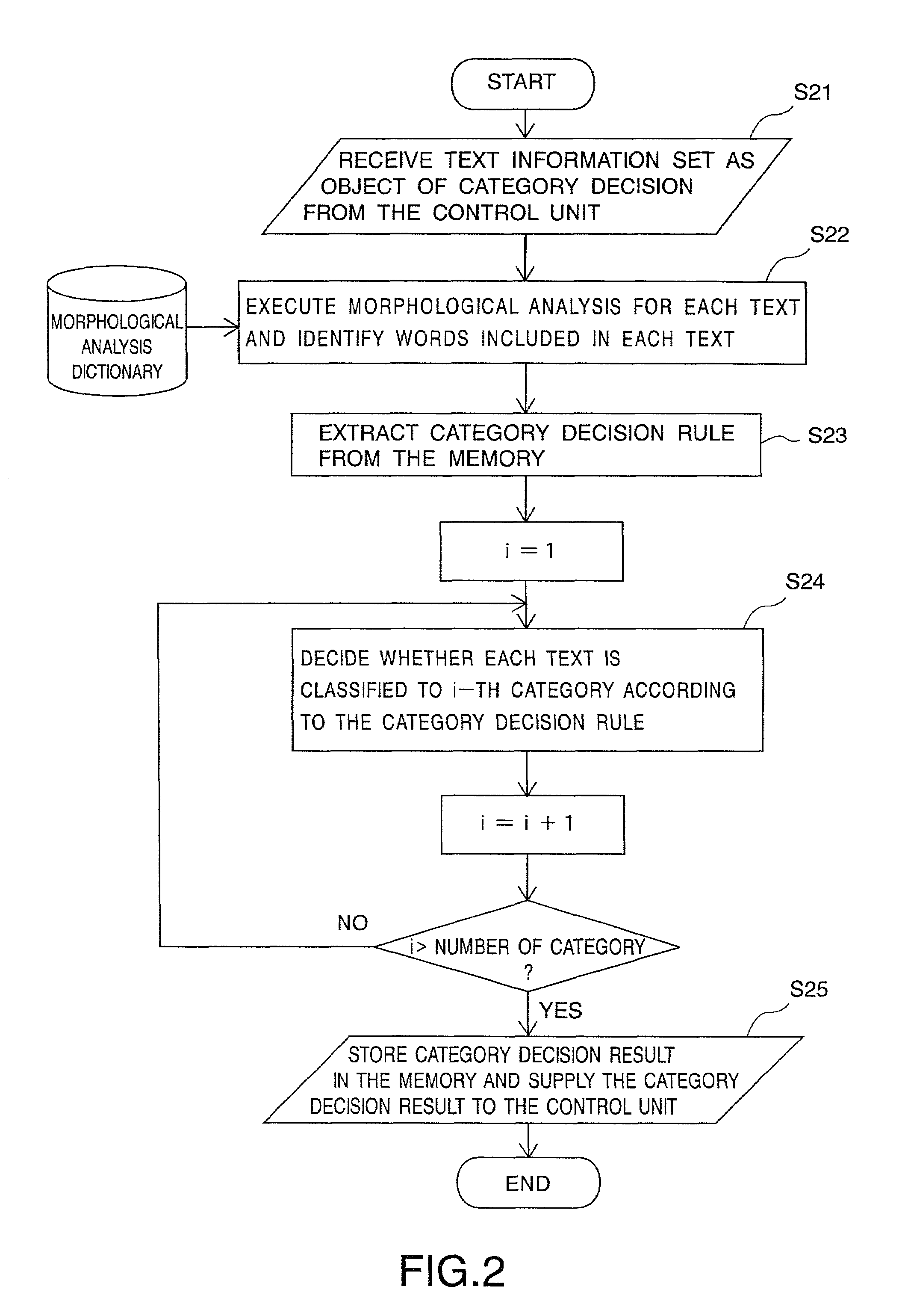Text information analysis apparatus and method
a technology of information analysis and apparatus, applied in the field of text information analysis apparatus and a method, can solve the problems of inability to classify using predetermined categories, huge computational cost, and defects in both techniques, and achieve the effect of quick classification and arrangement of a plurality
- Summary
- Abstract
- Description
- Claims
- Application Information
AI Technical Summary
Benefits of technology
Problems solved by technology
Method used
Image
Examples
third embodiment
[0041]FIG. 13 shows a display example of the category decision result and the clustering result according to the In this example, the clustering result of texts unclassified to every category is only displayed. In this case, if a cluster consisting of a large number of texts is displayed, the user can set a new category to which this cluster is classified.
[0042]Next, the fourth embodiment of the present invention is explained. The processing of the fourth embodiment is executed by combining the processings of the first, second, and third embodiments. As a specific feature of the fourth embodiment, the category decision rule is automatically corrected using the clustering result. Accordingly, in addition to control of the category decision processing and the clustering processing shown in the first, second, and third embodiments, after this processing, the control unit 14 corrects the category decision rule using the clustering result at arbitrary timing. Hereafter, this correction ...
fourth embodiment
[0049]In the fourth embodiment, a method for extracting feature words is not limited to the above-mentioned method. For example, a word commonly included in all texts of the cluster may be selected as the feature word.
[0050]In the fourth embodiment, the case of creating new category is only explained. In addition to this, the category decision rule of the existing category is automatically corrected. FIG. 15 is a flow chart of processing of the control unit 14 for automatically correcting the category decision rule of the existing category. First, the control unit 14 extracts feature words of each cluster by above-mentioned method (S151), and decides category corresponding to text belonging to the cluster (S152). For example, in FIG. 9, assume that the feature words are extracted from the cluster consisting of texts 1, 4, 6. Two (texts 1, 4) of these three texts (texts 1, 4, 6) belong to category 1. Accordingly, the category corresponding to the cluster is regarded as category 1. Ne...
PUM
 Login to View More
Login to View More Abstract
Description
Claims
Application Information
 Login to View More
Login to View More - R&D
- Intellectual Property
- Life Sciences
- Materials
- Tech Scout
- Unparalleled Data Quality
- Higher Quality Content
- 60% Fewer Hallucinations
Browse by: Latest US Patents, China's latest patents, Technical Efficacy Thesaurus, Application Domain, Technology Topic, Popular Technical Reports.
© 2025 PatSnap. All rights reserved.Legal|Privacy policy|Modern Slavery Act Transparency Statement|Sitemap|About US| Contact US: help@patsnap.com



